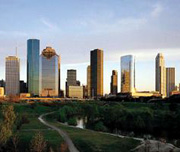操场上的42种不同语言
|
Byron Court, a school in north-west London, gets high marks for integration. No fewer than 42 languages are spoken in the playground. The 600 pupils from places as far apart as Iraq, the Philippines, Somalia, India, Romania and Slovakia mingle and play together. Many of these children spoke no English at all when they arrived in the UK aged five to eight years old. But they learn quickly. Martine Clark, the school's executive head teacher, believes that unity is very important. She says: "It's vital there's no differentiation between any languages or any culture. We do that by celebrating the diversity of the culture in our school." According to Clark, the children that come to Byron Court are adaptable and resilient. Having such a variety of backgrounds makes them better learners. Some have struggled, not always understanding instructions in the classroom. But after a few years, many have turned the disadvantage of not speaking English into the advantage of being bilingual. Nonetheless, educational standards can suffer when not everyone speaks the same language, at least to begin with. Though according to Martyn Pendergast, an education officer at Brent Council, this doesn't last for long: "It takes time to learn English and in Brent our children perform just below the national average when they are assessed at seven years old. But by the time they're 11 they've caught up with national standards and at 16 they're flying". Those who don't speak English but are used to discipline often progress rapidly. But some are concerned about children who are native speakers of English. Christopher McGovern, the chairman of the Campaign for Real Education, which aims to promote a greater emphasis on traditional values, says: "The problem is not the migrant children. The problem is the white working class children who are doing very badly at school." McGovern believes many parents think a lot of attention is given to migrant children, while their own children are being neglected. White British families and second-generation immigrants have been moving out of schools near urban centres to more distant suburbs, or to the countryside. That's a process which raises its own questions about the future of education in British cities. |



![亚特兰大[美国佐治亚州首府]](/uploads/shenghuo/2023/12/06/10142812090.jpg)




